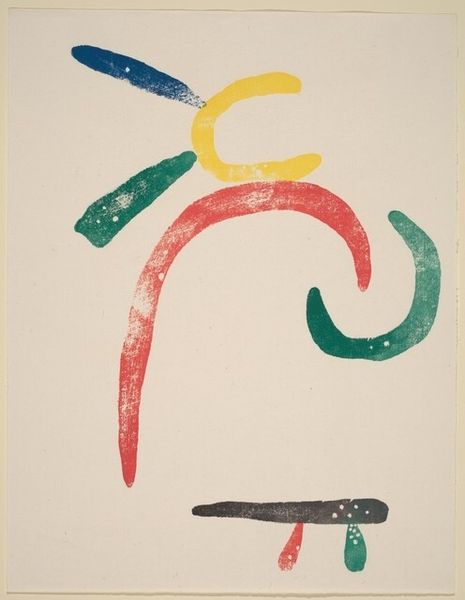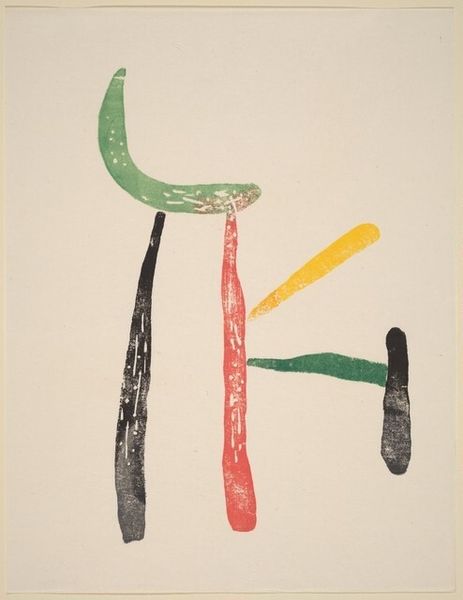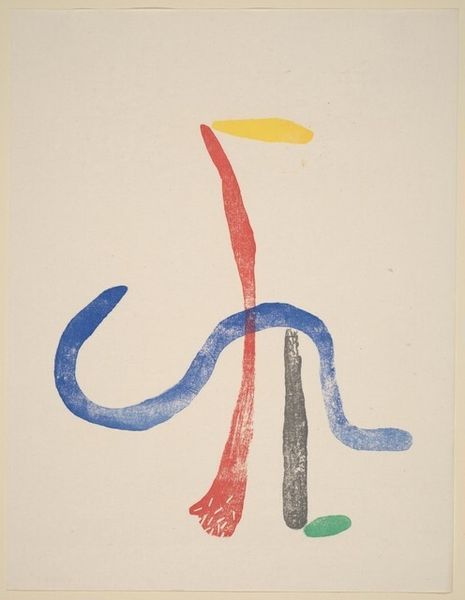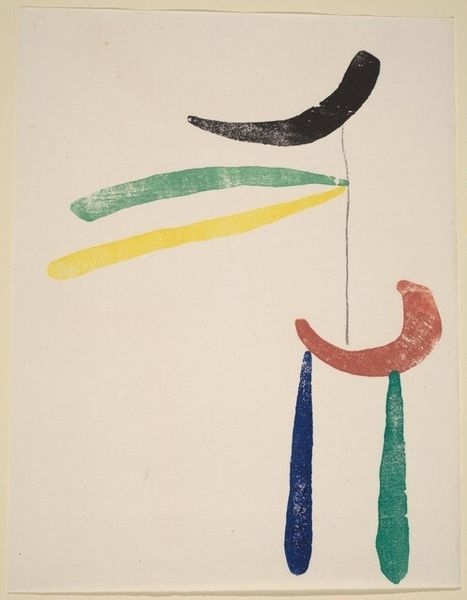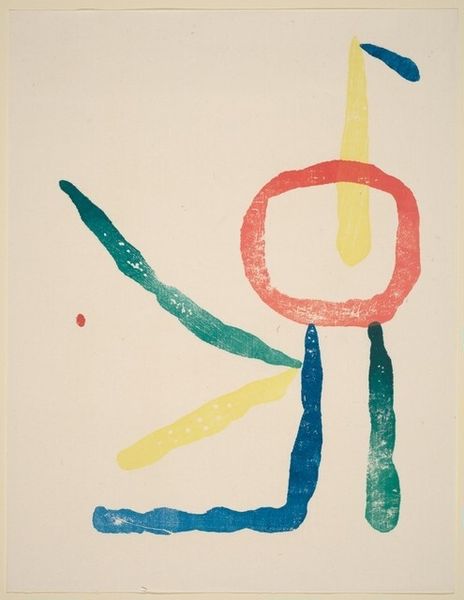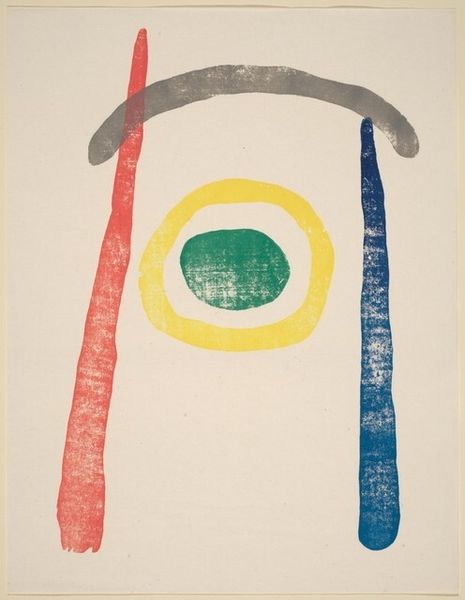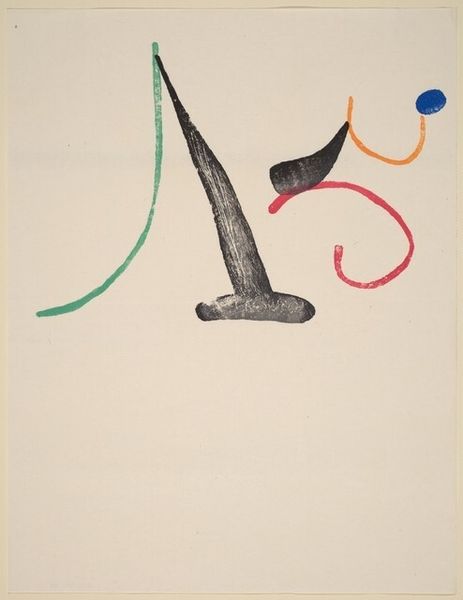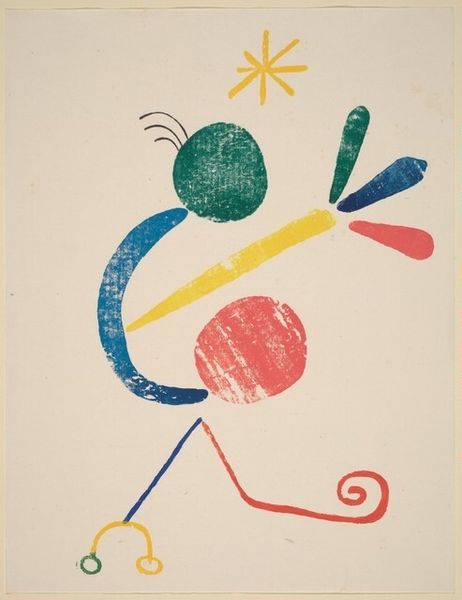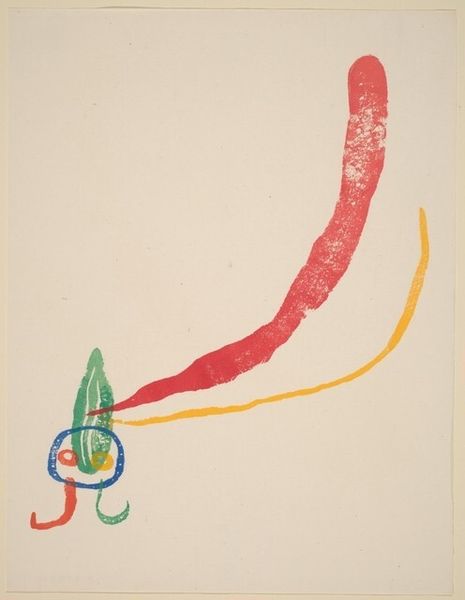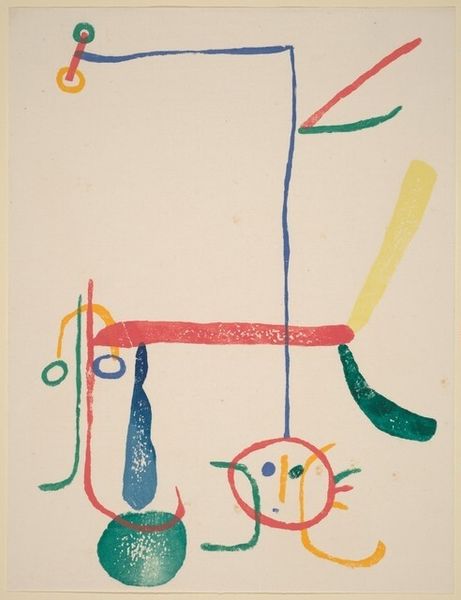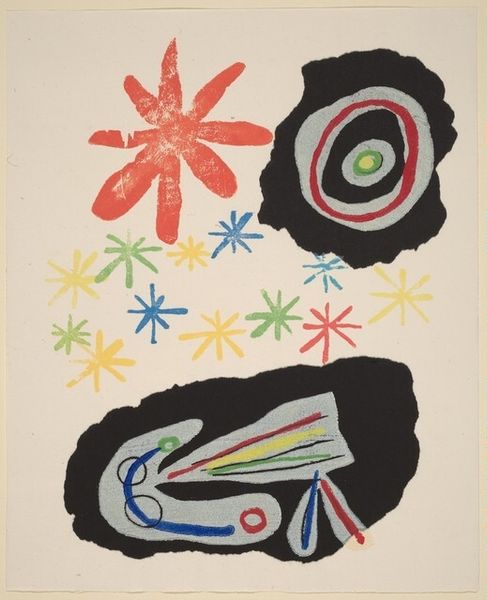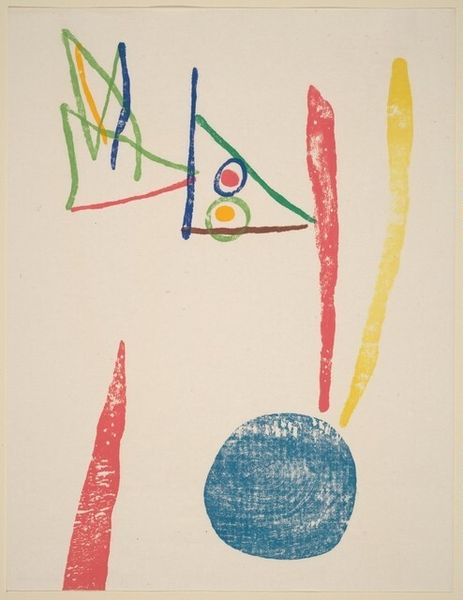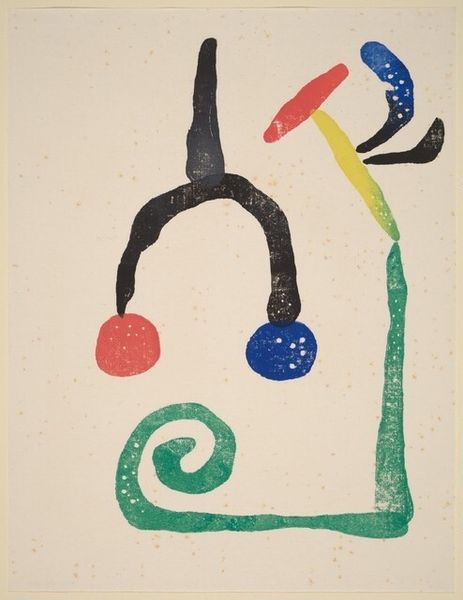![Untitled [plate LXXX] by Joan Miró](/_next/image?url=https%3A%2F%2Fd2w8kbdekdi1gv.cloudfront.net%2FeyJidWNrZXQiOiAiYXJ0ZXJhLWltYWdlcy1idWNrZXQiLCAia2V5IjogImFydHdvcmtzLzkzZTk2MDIyLWIwNzYtNGFkYi04Zjk1LTRhMzE0NjQxNTczNi85M2U5NjAyMi1iMDc2LTRhZGItOGY5NS00YTMxNDY0MTU3MzZfZnVsbC5qcGciLCAiZWRpdHMiOiB7InJlc2l6ZSI6IHsid2lkdGgiOiAxOTIwLCAiaGVpZ2h0IjogMTkyMCwgImZpdCI6ICJpbnNpZGUifX19&w=1080&q=75)
Dimensions: sheet: 32.39 × 25.08 cm (12 3/4 × 9 7/8 in.)
Copyright: National Gallery of Art: CC0 1.0
Editor: We're looking at Joan Miró’s "Untitled [plate LXXX]" from 1958, a woodcut print that showcases simple, almost playful shapes. There's a lightness to it, despite the somewhat crude execution. What do you see in this piece, beyond just the geometric forms? Curator: What I find compelling about this work is how Miró utilizes a simplified visual language to address the complex anxieties of the mid-20th century. His abstract forms, though seemingly innocent, operate as coded symbols. Consider the socio-political climate of 1958. Do you see these shapes as a response to the increasing threat of nuclear war, perhaps a childlike reimagining of a world teetering on the edge of destruction? Editor: I hadn’t considered that. I was mostly focused on the art elements: the composition and the textures, for example. Is it too much to read such political meaning into it? Curator: Not at all! Miró, throughout his career, subtly protested oppressive regimes. Remember, abstraction can be a powerful tool for subversion. By disorienting the viewer, he forces us to question our preconceived notions. He is resisting direct representation to reach the core. Where do you see elements of resistance within the form or style of this print? Editor: Perhaps the resistance lies in its seeming naiveté – a rejection of formal, academic art traditions and the anxieties of modern society? It presents an alternate universe, childlike, and raw. Curator: Exactly! The rawness of the woodcut emphasizes that rejection. Its accessibility, mirroring children’s art. And do not ignore that by that time he was already one of the modern masters; it might also be seen as a refusal to live up to expectations, by moving to simplicity, a symbol by itself! So, this is hardly politically passive. Editor: I hadn't considered it that way. I learned that even simple forms can carry immense political and social weight! Curator: Precisely! This interplay between form and content allows us to read this “Untitled” piece through an intersectional lens that incorporates political resistance, art historical commentary, and social critique. It’s quite a punch for an apparently innocent image!
Comments
No comments
Be the first to comment and join the conversation on the ultimate creative platform.
